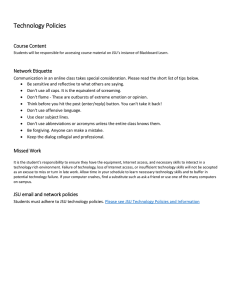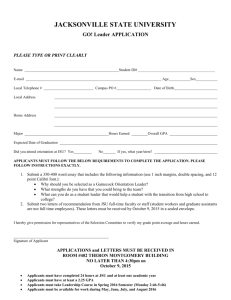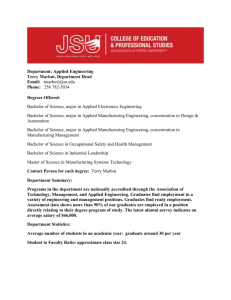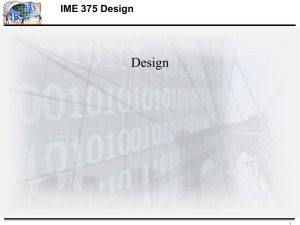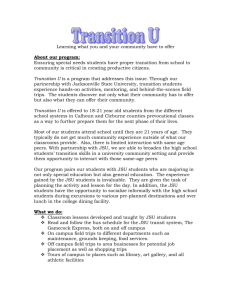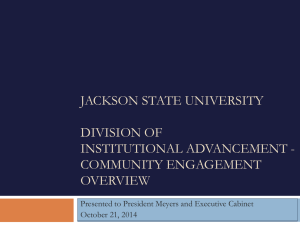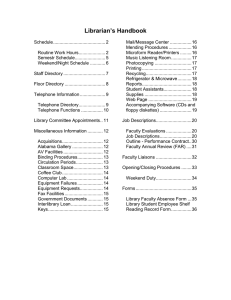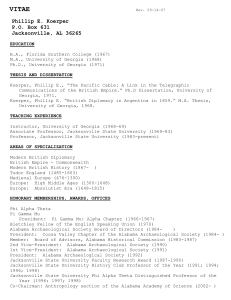FY15 Assessment Presentation
advertisement
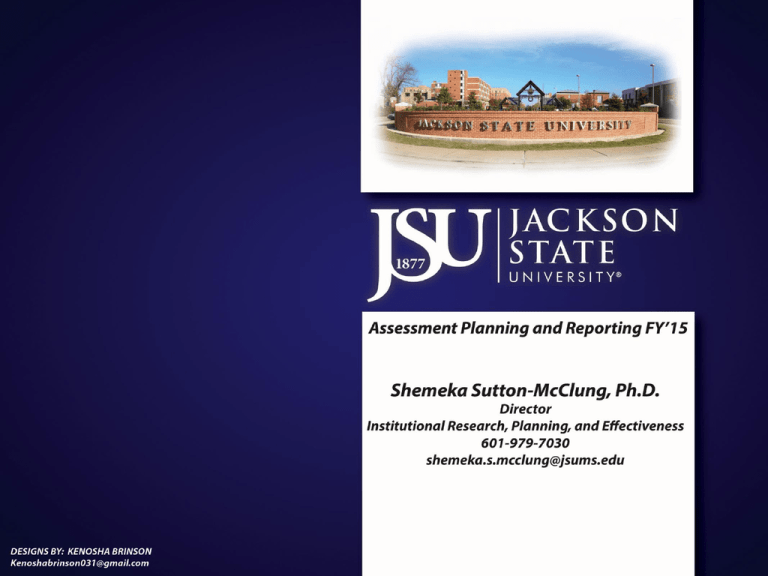
Session Goals: •To redefine assessment as it relates to our University mission. •To visit assessment plan/report templates and ensure understanding for annual completion. •To understand submission processes of annual assessment plans and reports. Agenda • • • • All About JSU Assessment-Definitions and Importance Assessment Process Annual Assessment Plan/Report Templates – Components (when and why?) – When and how to submit? • Question and Answer Session JSU Mission and Vision VISION: Jackson State University is to be a model urban learning community for highly motivated students from diverse backgrounds, where original research and experiential learning are integrated into rigorous and internationally prominent teaching, research and service-learning programs. MISSION: The University produces technologically-advanced, diverse, ethical, global leaders who think critically, address societal problems, and compete effectively. University Priorities Priority 1: Review and restructure academic programs and budgets. Priority 2: Accelerate the integration of technology throughout the institution. Priority 3: Improve management and increase the size of JSU’s available resources. Priority 4: Enhance the image of JSU. Priority 5: Create a model learning and working environment for the entire JSU Family. Super Goals 1: JSU will provide quality instruction to ensure our students are prepared for the 21st century for work, graduate, and professional schools. 2: JSU will create a marketing plan to increase presence in the Jackson Metro area, the state, the region as well as nationally and globally. Through this plan, we will communicate our mission and goals to our stakeholders. 3: JSU will improve its organizational efficiency for administration, faculty, and students. (Redesign the way we do business) 4: JSU will make strategic investments in people to ensure they achieve their best work. 5: JSU will grow the alumni donor base. (Diversification of Resources) Assessment Goal Goal —To maintain a culture of assessment at Jackson State University in both academic and nonacademic areas whereby improvements in organizational efficiency is observed for administration, faculty, staff, students, and other stakeholders. What is Assessment? Assessment is defined as an ongoing process aimed at understanding and improving student learning. It involves making our expectations explicit and public; setting appropriate criteria and high standards for learning quality; systematically gathering, analyzing, and interpreting evidence to determine how well performance matches expectations and standards; and using the resulting information to document, explain, and improve performance. (Thomas A. Angelo, AAHE Bulletin, November 1995, p.7) Why is Assessment Important? • • • • Goal Attainment Decision Making Accountability Accreditation—SACS 3.3 Institutional Effectiveness (The Institution identifies expected outcomes, assesses the extent to which it achieves these outcomes, and provides evidence of improvement based on analysis of the results. • Improvement in Service • STUDENT LEARNING Accreditation and Institutional Effectiveness According to SACSCOC Philosophy: “The Commission on Colleges expects institutions to dedicate themselves to enhancing the quality of their programs and services within the context of their resources and capacities and to create an environment in which teaching, public service, research, and learning occur, as appropriate to the mission. At the heart of the Commission’s philosophy of accreditation, the concept of quality enhancement presumes each member institution be engaged in an ongoing program of improvement and be able to demonstrate how well it fulfills its stated mission. Although evaluation of an institution’s educational quality and its effectiveness in achieving its mission is a difficult task requiring careful analysis and professional judgment, an institution is expected to document the quality and effectiveness of all its programs and services.” Source: The Principles of Accreditation: Foundations for Quality Enhancement (Southern Association of Colleges and Schools Commission on Colleges, p.2) Assessment Process Planning and Reporting Create Goals/Outcomes Using Evaluation Results to Improve Services Attain/Review Assessment Results Establish Means of Assessment & Criteria for Success Assess Performances Against Criteria Assessment Planning (Step-By-Step Approach) Step 1 Describe the academic/nonacademic program or unit. Step 2 Define departmental mission. Step 3 Define outcomes or goals. Step 4 Identify and describe your means of assessment. Step 5 Establish your criteria for success. Defining Goals and Outcomes GOALS • Goals – Broad statements of meaningful expectations, achievable, assessable, and consistent with mission. • Objectives • – Brief, clear statements of outcomes, measurable, realistic, achievable, consistent with the goals. Worded in terms of what the unit will accomplish or what its clients would think, know, or do following the provision of services. Student Learning OUTCOMES (SLOs) • Expected (student learning) outcomes are descriptions of what you intend for students to think (affective), know (cognitive), or do (behavior) when they have completed the degree program. These outcomes should be written to reflect results. Means of Assessment • Assessment Measures – How will the success of the outcome be measured? • Multiple Measures – 2 per objective – Use methods that evaluate more than one objective. • Direct Measures (portfolios, papers, projects, internships, performances, standardized tests) • Indirect Measures (surveys, focus groups, interviews, etc.) Criteria for Success • Success Criteria – Standards of Success – Define your goals and targets to reach for each goal. – Include dates for which objectives will be reached – Written in anticipation of desired results Assessment Reporting (Step-by-Step Approach) • Step 1 Data Collection/Results • Step 2 Use of the Results to Improve Instructional Programs and Services Other Components: • Major Difficulties • Goals for next fiscal year based on results • Non-academic areas-Complete priorities (listing only those supported by your unit.) Data Collection/Results • Describe the process used to analyze and summarize results. • Document your results! – Does the data fail to meet, meets, or exceeds the criterion for success? Use of the Results to Improve Instructional Programs and Services • Data Results should indicate steps to improve or revise assessment processes. – Results > Criteria for Success • Revise the assessment process to increase success criteria or assessing another outcome/aspect of outcome may be necessary. – Results < Criteria for Success • Specific improvements are necessary. Submission and Review • • • • • Annual Plans FY’15 - July 15, 2014 (Upload-via website) Peer Review of Assessment Plans - September 2014 Academic/Non-Academic Units Feedback - January 2015 Annual Reports FY’15 – July 1, 2015 (Upload-via website) Peer Review of Assessment Plans FY’16/Assessment Reports FY’15 - September/October/November 2015
